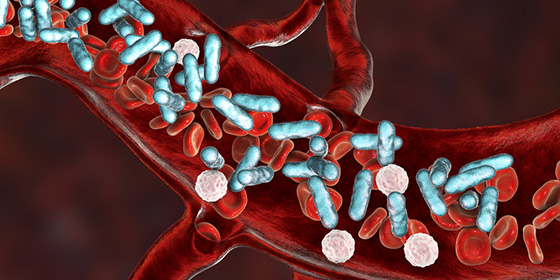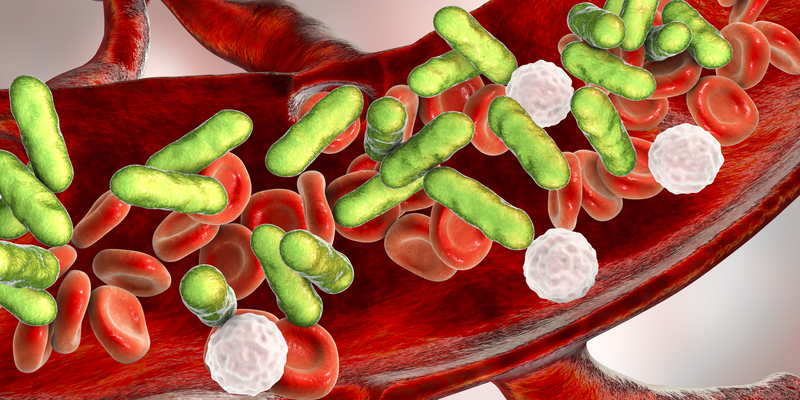1: Many people develop sepsis – Raising awareness of sepsis can save lives
It is estimated that sepsis affects 27-30 million people worldwide each year. There are several linked terms - sepsis, septic shock, septicaemia, blood poisoning. As sepsis can develop quickly, prompt recognition and treatment are important to minimise its effects.
This short video summarises sepsis:
2: Several biological changes occur in the body during sepsis
In sepsis, the body’s immune system becomes dangerously active, harming healthy cells. Changes to the lining of blood vessels and the release of chemicals from the immune system lead to many complex and rapid biological changes. Organs such as the heart, lungs, kidneys, liver and brain can be affected during septic shock, due to not receiving enough oxygen from the blood. Effects of sepsis can cause problems in the skin, especially the fingers and toes. Treatments aim to eliminate the infection using antibiotics; to prevent organ damage and to support recovery.

Health sciences are important to diagnose the infection, assess the effects of sepsis on the body, and to enable health professionals to provide effective and evidence-based care.
3: Identifying sepsis, whether in yourself or someone else is challenging - because symptoms are varied
Using sepsis as an acronym, the most common symptoms are described:
- S severe shortness of breath
- E extremely cold hands or feet
- P palpitations or racing heart
- S slurred speech
- I I have never felt so bad
- S shivering uncontrollably
Public health campaigns aim to encourage people to question whether their symptoms might be sepsis, and to seek advice from a health professional. Here is a short video by the UK Sepsis Trust which aims to inform the public about recognising sepsis:
4: Although sepsis can affect anyone, it is more common in some groups of people
These include people over the age of 65, babies and very young children, very recent pregnancy or surgery and those with a long term physical health condition.
When people are unable to tell you how they are feeling, identifying sepsis is more challenging, for example babies, young children and people with a learning disability who may show a variety of symptoms such as drowsiness, a poor appetite, noisy breathing, skin changes, shivering, an upset tummy and few wet nappies.
Public health campaigns, such as the video below and additional training for health care professionals are having a positive impact on detecting the signs of sepsis and enabling those who need urgent care to access it quickly.
5: Many people recover from sepsis – after the infection and emergency care phase, but further challenges may arise during recovery
These may be both physical and psychological, such as a poor appetite, tiredness and difficulty concentrating or sleeping. Friends, relatives and carers may also have worries. Some people may have life-changing physical after-effects, such as Stella whose story is shown in the video
There are resources and organisations that offer support for those who have experienced sepsis.




Rate and Review
Rate this video
Review this video
Log into OpenLearn to leave reviews and join in the conversation.
Video reviews
This article should be required reading for everyone